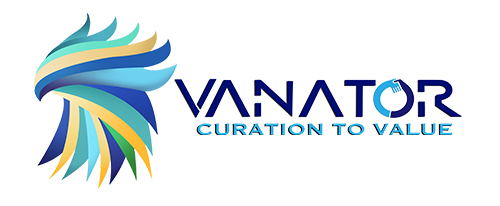Discover the best candidate screening methods in 2025, startup hiring emphasizes precision with AI-driven skills assessments, behavioral interviews, and cultural fit evaluations. Screening methods prioritize adaptability, mission alignment, and transparency, using curated applicant pools to secure high-impact, motivated talent despite big tech competition.
- Home
- Blogs
- Modern Candidate Screening in 2025: Best Methods for Startup Hiring
Modern Candidate Screening in 2025: Best Methods for Startup Hiring
Discover the best candidate screening methods in 2025, startup hiring emphasizes precision with AI-driven skills assessments, behavioral interviews, and cultural fit evaluations. Screening methods prioritize adaptability, mission alignment, and transparency, using curated applicant pools to secure high-impact, motivated talent despite big tech competition.
Key Takeaways:

Introduction
Startup hiring in 2025 is defined by caution and precision. Early-stage teams now seek each new hire to deliver outsized impact, not just fill a chair. After the volatility of recent years, founders emphasize runway, ROI and fit: one survey finds 20% of founders struggle to attract technical talent, and many say hiring fast for growth while keeping a high bar for motivation and cultural alignment is a “twofold” challenge. In practice, this means scanning smaller but more critical applicant pools, vetting for adaptability, and balancing hard skills with mindset. Companies winning top talent treat hiring as a strategic advantage, not an emergency scramble. Yet the challenges remain steep: startups compete with big tech on compensation and stability, and candidates today increasingly demand transparency and “human touch” in the process. In fact, a recent founder report notes that beyond skills, successful hires must share the mission and thrive in uncertainty.
In this environment, data-driven tools are becoming essential. By 2025 most firms use AI in recruiting: one study found 42% of talent leaders are boosting AI hiring tools to cut timetofill. But automation is most effective when it augments, not replaces, human judgment. Savvy startups use AI to handle repetitive screening tasks and preserve personal outreach in interviews. As one talent guide notes, the winners “use AI to speed things up, not replace the human element entirely”. With that balance in mind, founders today are evaluating a range of modern screening methods – from AI resume readers to gamified tests – to streamline hiring while maintaining quality. Below we break down the most effective screening approaches of 2025, their pros and cons, and examples of companies using them.

AI-Powered Resume Screening
Illustration of a recruiter reviewing resumes on a screen.
AI-driven resume screening uses natural language processing and machine learning to scan applicant CVs for keywords, skills, and indicators of fit. In practice, these tools rank and filter hundreds of resumes in seconds, reducing what was once days of manual review to just a few hours. Studies show it works: for example, a Talent Board/Phenom report found AI screening can cut time spent on résumé review by up to 75% In one tech company case study, adding an AI screening module halved time-to-hire and boosted qualified shortlist by 45% (allowing recruiters to focus on interviews). AI resume tools (like Ideal.ai, SeekOut, or X0PA) use custom scoring algorithms to highlight top candidates and ignore mismatches. They also strip out biased cues (e.g. anonymizing names or graduation year) to give every resume a fair shake.
Advantages: The biggest benefit is speed and consistency. AI does not tire or get bored sifting through 500 resumes, so it reliably flags all profiles matching the job criteria. Founders gain efficiency and can scale hiring without adding recruiters. Quality can improve too: one report noted companies using AI tools in hiring were 46% more likely to make successful hires AI screening also uncovers hidden talent – for example, non-obvious skillsets or underrepresented candidates who might be missed by keyword bias. Many tools promise to reduce unconscious bias by ignoring demographics and focusing on skills.
Limitations: AI models are only as good as their design. A high-profile example: Amazon scrapped its internal AI screener after it consistently downgraded resumes with “women’s” (as in “women’s chess club”) If training data is biased toward certain backgrounds, AI can amplify that. Technical pitfalls also exist unusual resume formats or creative descriptions may fool the algorithm. Over-reliance on strict keyword matching can let great candidates slip through the cracks if they phrase things differently. Also, a purely automated screen can feel impersonal to applicants. Thus experts recommend always coupling AI screening with a review process. Founders should treat AI as a filter, not a gatekeeper – using it to shortlist, but ensuring humans make final decisions.
Example: In practice, tech startups often use tools like Ideal or Fetcher (for sourcing) to pull candidate profiles, then an ATS plugin like ReliaPrep or Ceipal to automatically screen the resumes against the job spec. In one anecdote, introducing an AI resume parser cut manual screening time by 60% and led to 45% more qualified candidates shortlisted. Many high-growth startups report similar gains: overall hiring efficiency can improve by ~20% when AI handles initial sorting.
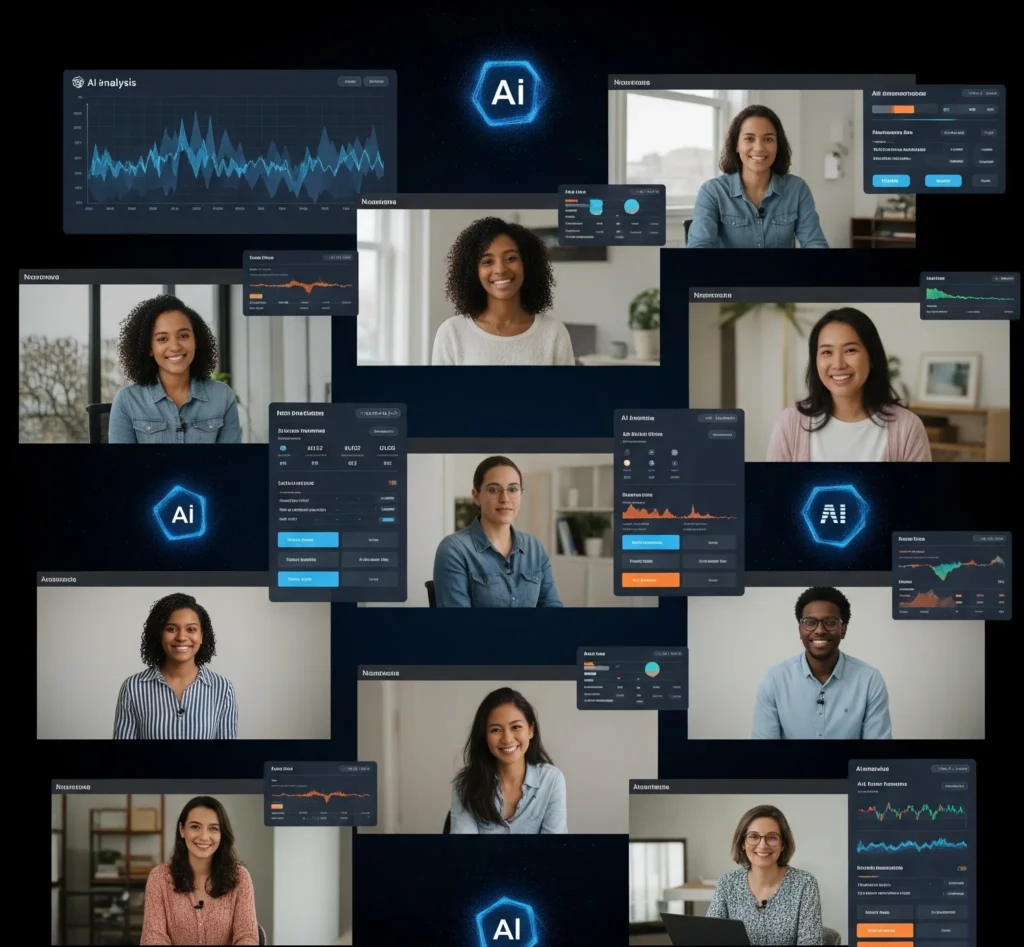
Video Interviews & AI Analysis
Video interviewing—both live and asynchronous—is now common for startups with remote teams or long-distance candidates. Beyond just replacing in-person interviews, modern platforms apply machine learning to analyze those videos. For example, tools like HireVue, Modern Hire, and SparkHire conduct video “interviews” where candidates answer pre-recorded prompts on camera. The AI then evaluates verbal responses (keywords, phrasing), speech patterns (tone, pace) and in some cases nonverbal cues (gestures, expressions). The goal is to surface behavioral and communication insights at scale.
Advantages: Video interviews save time and can be done on the candidate’s schedule. For hiring managers, reviewing a 10-minute video answer can be faster than scheduling live calls. AI analysis can highlight subtle skills – e.g. problem-solving by tone, or communication style – that may not appear on a resume. For example, one global firm (Unilever) famously replaced initial interviews with AI-driven video assessments and situational judgment games, cutting its hiring time by 75% while boosting the diversity of hires. Video screening also gives candidates a chance to demonstrate their personality and culture fit beyond text.
Limitations: The biggest concern is bias and fairness. Algorithms analyzing faces or voices have proven error-prone. For instance, HireVue famously ended its use of facial-expression scoring after finding that variables like accent or dialect could unduly influence resultst. Ethical and legal issues arise: Will an AI penalize a candidate for nervous gestures or an atypical speech pattern? There are also accessibility issues (poor lighting, bandwidth, or disability accommodation). Consequently, many companies now use only content analysis (transcripts) rather than facial cues, or involve a human interviewer for evaluation. Another drawback is candidate comfort: some applicants dislike being “interviewed” by a camera or worry about a “black box” judge. Transparency helps: top startups explain that AI is only scoring relevance, not making final decisions. In short, video AI is a powerful filter, but should not fully replace human-led interviews.
Example: Companies across industries use video screening. Large enterprises (e.g. HSBC, Siemens) have piloted these platforms for high-volume roles. At startups, video interviews are often paired with live follow-ups. For example, a fintech unicorn might use SparkHire or VidCruiter for first-round screening (quick video responses), then invite top scorers for technical interviews. A notable case: Unilever’s AI system (2017) included recorded video responses to realistic scenarios. This identified candidate qualities like adaptability that traditional CV reviews missed, speeding hiring 75% and improving diversity. (Strictly speaking, Unilever also used gamified tasks – see next section – but their use of video AI illustrates the approach.)

Gamified Assessments & Skill Tests
Gamified and simulation-based tests are gaining traction as a fun, engaging way to assess abilities. These range from coding challenges and puzzles to full-fledged “games” measuring cognitive and behavioral traits. For example, coding platforms like HackerRank or Codility give developer candidates real coding tasks or hackathons. Other tools (like Pymetrics, Arctic Shores, or Knack) present neuroscience-based mini-games that implicitly test skills like memory, pattern recognition, risk tolerance or soft skills under pressure.
By turning tests into interactive tasks, companies can measure a candidate’s actual performance on job-like tasks. Unlike quizzes or resumes, these assessments generate objective data on how candidates behave, not just what they say. Early evidence suggests big gains: one analysis reported organizations using game-based tests saw ~30% higher candidate engagement and 35% faster recruitment times. Major employers (Unilever, PwC, Deloitte) have used such gamification for campus hiring, noting increased candidate satisfaction and more diverse shortlists. For instance, Unilever found that shifting to games and video interviews allowed 75% of applicants to enjoy the process, and it increased diversity hires by double digits.
Advantages: Gamified tests can evaluate both hard and soft skills in an immersive way. A coding game directly shows a developer’s style and efficiency, while a strategy simulation can reveal leadership or decision-making style. These assessments tend to be more engaging – especially for Millennials and Gen Z applicants – so completion rates and candidate goodwill improve. The data generated is rich: it is quantitative (scores, times, choices) and often links to predictive performance models. For instance, platforms claim they can predict up to 25% better who will succeed, by combining game metrics with machine learningt. They also reduce some interviewer biases, since everyone takes the same structured test.
Limitations: No method is perfect. Critics warn that gamification can introduce new biases if games are not carefully validated. Some candidates feel anxious or silly being “played” in an interview. Certain roles (e.g. senior or highly specialized jobs) may not fit well with generic games. Also, developing high-quality gamified tests is expensive and complex. Startups must ensure the tests actually correlate with job performance; otherwise results are meaningless. There’s also a risk of “teaching to the test” (candidates gaming the games). Practically, gamified assessments are best as one part of the funnel, not a one-stop hire-or-die gate.
Tools: Popular platforms include Pymetrics (neuroscience games for cognitive and emotional traits), Codility or HackerRank (hands-on coding tests), Arctic Shores and Knack (soft-skill games). TestGorilla and Criteria Corp offer libraries of gamified aptitude and personality challenges. Founders might start with a free coding quiz for technical roles and a couple of online games (like logic puzzles) for general roles, then scale up to advanced platforms as hiring volume grows.

Behavioral & Cultural Fit Assessment Tools
At the final stages of screening, startups often need to verify credentials and character. Traditionally this meant manual reference calls and separate background reports – a slow chore. Now automation helps here too. Services like Checkr or GoodHire automate background checks (criminal, education, employment) by integrating directly with your ATS and pulling in public records and databases. Similarly, reference-check platforms (e.g. SkillSurvey or Xref) send standardized questionnaires to a candidate’s referees and compile the responses.
Advantages: Automated checks greatly speed up what used to be a bottleneck. One industry analysis found that computerized reference-check systems can achieve an 82% completion rate for referee feedback – versus only ~30% when recruiters called references manually. Because referees fill out an online form (often anonymously), they tend to give more honest and detailed comments. Time savings are significant too: firms report cutting the hiring cycle by a week or more by using automated reference tools. For background checks, platforms like Checkr use AI to match identities across databases, alerting teams to any red flags rapidly. In regulated fields, these tools also ensure compliance (FCRA in the US, GDPR in Europe) by documenting the process.
Limitations: Background screening can raise legal and ethical issues. Some countries limit what you can check, and careless use of social media scans or credit checks may violate privacy laws. Startups must budget for these services – third-party checks often charge per candidate and can become pricey with volume. There’s also risk of false positives or incomplete data (some records may not be updated). Automated references can still yield generic praise – they’re not foolproof in discerning subtle candidate flaws. Finally, overly rigid automation can hurt candidate experience if not handled sensitively (e.g. suddenly rejecting an applicant because an algorithm found a name match in a database). In practice, many startups use automation as a preliminary filter, with final verification done by a human HR person reviewing the report.
Example: Health-tech startups often use automated background checks as part of their compliance. For instance, a telemedicine startup might require every hire to clear a Checkr report before start. Likewise, a tech recruiter might leverage Xref to rapidly survey three references and flag any disparities. In general, automated background/reference tools are most useful for fast-growing teams that cannot afford multi-week checks. The time saved can be the difference between getting an offer accepted or losing a candidate.
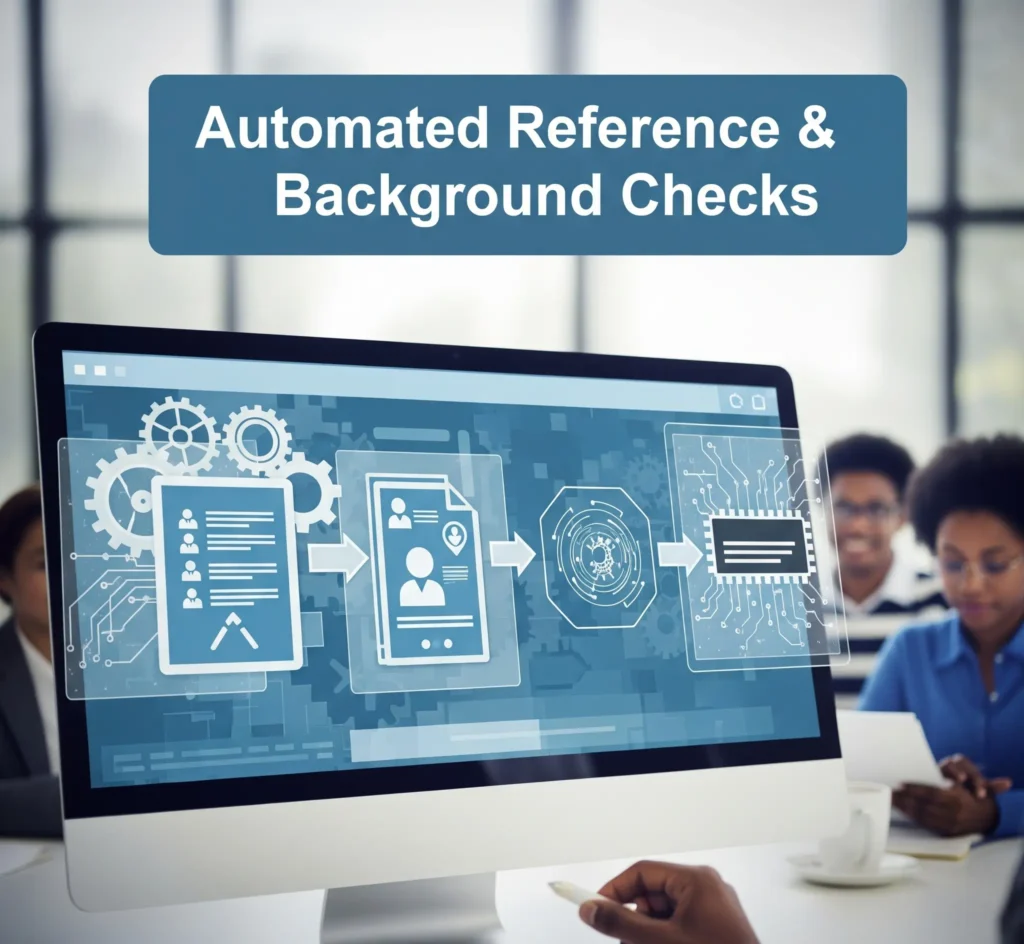
Automated Reference & Background hecks
Going beyond current candidates, many startups are now using predictive analytics to forecast hiring success. This means feeding historic performance and hiring data into machine learning models that score new candidates on their likely future outcomes. For example, a predictive tool might analyze correlations between candidate attributes (scores on assessments, experience, interview ratings) and actual tenure or performance on the job.
Advantages: When accurate, predictive hiring can dramatically improve decision-making. Data shows companies using AI in recruitment are ~46% more likely to make successful hires Predictive models can flag candidates with high retention risk or suggest which of two finalists is more likely to thrive. In practice, this helps set realistic performance expectations and decide where to invest interview effort. For instance, Randstad has reported doubling its placement rate (20% to 40%) after using predictive analytics to identify which skills led to success in each sector. Founders can use such forecasts to balance the hiring mix: perhaps choosing one candidate who checked all tech boxes and another who has predictive indicators of longevity.
Limitations: Predictive analytics relies on high-quality data. Many startups lack enough historic hiring data to train reliable models, and even when data exists it may carry human biases. A model trained on past hires who all came from a particular university or background can perpetuate that bias. Also, past performance is not destiny – a promising new hire may defy odds, and conversely models are not infallible. The black-box nature of some ML systems also raises transparency issues. For these reasons, predictive tools should not replace human judgment: they should provide guidance, not edicts. In early-stage companies, predictive analytics is often “nice to have” rather than essential, since there isn’t a large data history. However, as a startup grows, linking assessment outcomes to actual performance can be a powerful refinement.
Use Case: Some recruiting platforms incorporate predictive scoring. For example, Eightfold.ai uses deep learning on company talent data to suggest best-fit candidates for a role. Newer SaaS like HyrGPT (Harvard case study platform) promise to screen applications with AI models that learn from past hires. In general, founders exploring predictive analytics should first collect and clean their hiring data, then pilot a model on a non-critical role to gauge accuracy. The biggest value of predictive analytics is in continuous improvement: over time the model learns what traits (skill test scores, personality traits, interview responses) truly predict success in the specific company context.

Predictive Analytics & Hiring Forecasting
Going beyond current candidates, many startups are now using predictive analytics to forecast hiring success. This means feeding historic performance and hiring data into machine learning models that score new candidates on their likely future outcomes. For example, a predictive tool might analyze correlations between candidate attributes (scores on assessments, experience, interview ratings) and actual tenure or performance on the job.
Advantages: When accurate, predictive hiring can dramatically improve decision-making. Data shows companies using AI in recruitment are ~46% more likely to make successful hires Predictive models can flag candidates with high retention risk or suggest which of two finalists is more likely to thrive. In practice, this helps set realistic performance expectations and decide where to invest interview effort. For instance, Randstad has reported doubling its placement rate (20% to 40%) after using predictive analytics to identify which skills led to success in each sector. Founders can use such forecasts to balance the hiring mix: perhaps choosing one candidate who checked all tech boxes and another who has predictive indicators of longevity.
Limitations: Predictive analytics relies on high-quality data. Many startups lack enough historic hiring data to train reliable models, and even when data exists it may carry human biases. A model trained on past hires who all came from a particular university or background can perpetuate that bias. Also, past performance is not destiny – a promising new hire may defy odds, and conversely models are not infallible. The black-box nature of some ML systems also raises transparency issues. For these reasons, predictive tools should not replace human judgment: they should provide guidance, not edicts. In early-stage companies, predictive analytics is often “nice to have” rather than essential, since there isn’t a large data history. However, as a startup grows, linking assessment outcomes to actual performance can be a powerful refinement.
Use Case: Some recruiting platforms incorporate predictive scoring. For example, Eightfold.ai uses deep learning on company talent data to suggest best-fit candidates for a role. Newer SaaS like HyrGPT (Harvard case study platform) promise to screen applications with AI models that learn from past hires. In general, founders exploring predictive analytics should first collect and clean their hiring data, then pilot a model on a non-critical role to gauge accuracy. The biggest value of predictive analytics is in continuous improvement: over time the model learns what traits (skill test scores, personality traits, interview responses) truly predict success in the specific company context.

Choosing the Right Mix of Tools
No single screening method fits all needs. Founders should tailor their mix of tools based on team size, industry, and growth stage:
- Team Size & Volume: Small startups (under ~20 hires/year) may not need complex automation. A single hiring manager might manually review resumes and do live interviews, using free or low-cost tools (e.g. basic spreadsheet tracking or Google Forms tests). As hiring volume rises (Series B+), investing in an ATS with AI screening (e.g. Lever/Greenhouse with an AI plugin) and automated scheduling becomes worthwhile. For very high-volume roles (customer support reps, seasonal work), solutions like Harver (mass assessments + automated rejig) can pay off.
- Industry & Role: Technical roles usually demand skill tests: coding assessments (HackerRank, Codility) for developers, case simulations for consultants, etc. Creative or sales roles may benefit more from culture-fit and behavioral tools. Regulated sectors (finance, healthcare) should prioritize thorough background checks (Checkr, GoodHire) and use validated, bias-audited psychometric tests (e.g. SHL, Criteria) to meet compliance. Startups in emerging fields (AI, biotech) might emphasize cognitive assessments or predictive fit tools since benchmark data is scarce.
- Growth Stage: Early-stage startups often prize flexibility and “A-player” mentality, so interviews and referrals dominate, with screening tools used sparingly to save time. As a startup scales, repeatability becomes key. Tools that integrate (resume AI + video interview + reference) can enforce consistent standards across hires. Faster growing teams should also track metrics (time-to-hire, quality-of-hire) to evaluate tools. For example, after Series C a startup may adopt a predictive analytics layer (like Eightfold or Visier) using its accumulated hiring data.
- Budget & Expertise: SaaS recruiting tools range from free (basic skills tests, limited resume parsers) to tens of dollars per candidate (full predictive suites). Founders should weigh the ROI: a tool that saves a recruiter 10 hours a week may be worth its cost. It’s also critical to ensure someone on the team knows how to configure and interpret these tools; otherwise a simple spreadsheet and structured interview guide can outperform a neglected software.
- Culture Fit vs. Innovation: Ironically, if a team is very small, an overly rigid “culture test” might filter out brilliant but unconventional candidates. In such cases, lean on behavioral interviews and reference checks rather than algorithmic scoring. As the company grows, formalizing culture fit screening (with tools like Bryq or even custom surveys) can help maintain cohesion.
In summary, founders should think of screening methods as a menu to assemble. A recommended workflow for a mid-size startup might be:
- Screen Resumes: Use an AI parser to shortlist (70%) and remove obvious mismatches.
- Initial Assessment: Send shortlisted candidates a skill test (if applicable) or a brief gamified quiz to gauge key competencies.
- Video Interview: Conduct a one-way video interview with ML analysis (or a live interview) focusing on situational questions.
- Culture/Behavioral Test: If still undecided, use a personality/culture fit survey or a final phone call with structured questions about values.
- Automated References & Background: Once finalists are chosen, run an automated reference and background check to verify.
- Human Interview: Throughout, keep senior staff involved in at least one conversation to preserve human insight.
Each step accelerates processing of candidates, but human oversight at transition points ensures quality. Ultimately, the “right mix” is one where tools lighten the load without making founders feel disconnected from candidate discovery.
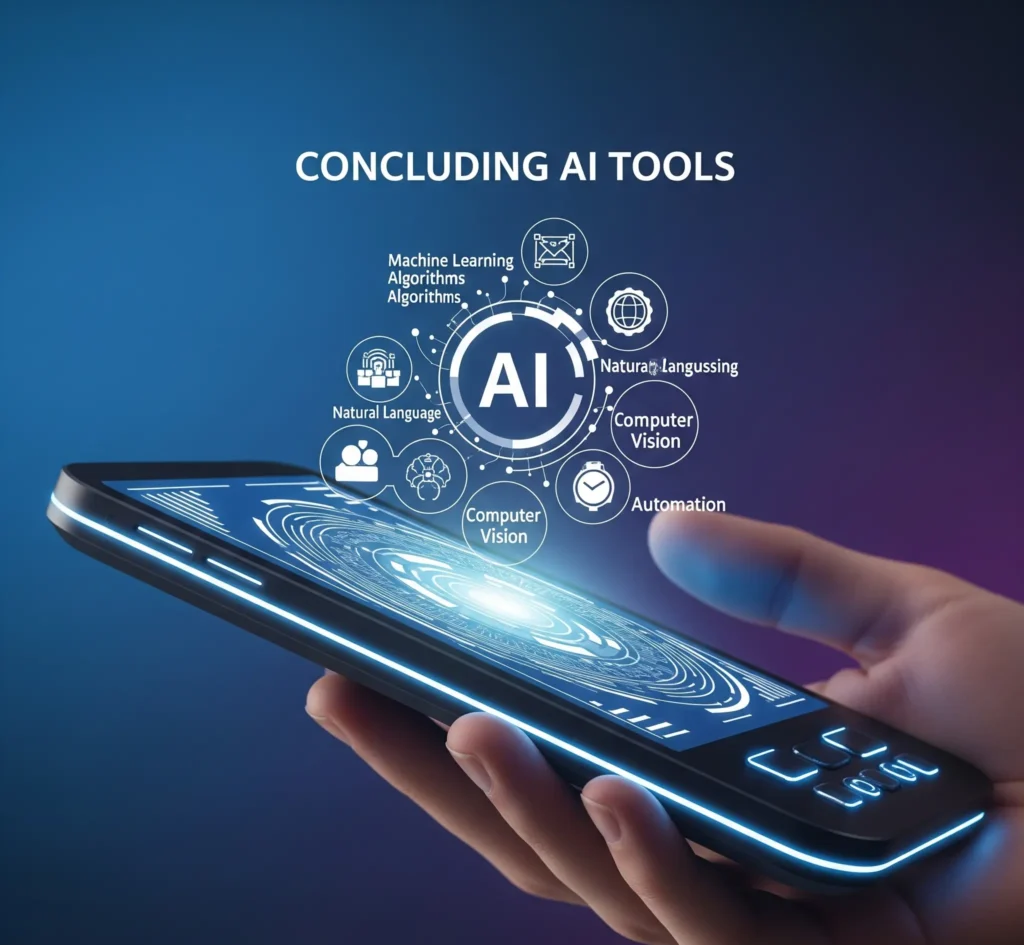
Summary of Methods and Tools
Method | Example Tools (Popular Platforms) | Pros | Cons | Ideal Use Case |
AI Resume Screening | Ideal.ai, SeekOut, Fetcher, CVViZ | Huge time savings (↓ up to 75% review time); consistent filtering; can flag hidden talent; supports diversity (blinds bias) | May overlook nuanced candidates; can embed bias if poorly trained; black-box opacity | Early funnel screening at scale; large applicant pools |
Video Interviews (ML) | HireVue, SparkHire, VidCruiter, ModernHire | Scalable remote interviews; analyzes tone/content; saves scheduling hassle | Bias concerns (accent/appearance); privacy/legal issues; some candidates uncomfortable | First-round interviews when remote; high-volume roles |
Gamified/Skill Assessments | HackerRank, Codility (coding); Pymetrics, Arctic Shores (games); TestGorilla, Criteria Corp (general) | Engaging for candidates; objective measure of real ability; can assess soft skills; data-rich insights | Game design cost; not universally relevant; possible “gaming” of tests; potential bias if games poorly designed | Technical roles (coding tasks); large-volume applicant screening; internship programs |
Behavioral/Cultural Fit | Bryq, Predictive Index, Criteria Corp, SHL | Helps find aligned, cohesive hires; can boost retention (↓20–25% turnover); standardized interview frameworks reduce subjectivity | Risk of homogeneity (cloning); soft metrics hard to validate; tool misuse can bias diversity | Roles needing strong teamwork or leadership; mature startups with defined culture |
Reference/Background Checks | Checkr, GoodHire, Xref, SkillSurvey | Verifies credentials; fast automated collection (82% reference response vs 30% manually); reduces hiring mistakes; compliance managed | Cost per check; legal/privacy constraints; sometimes false positives/negatives; may delay offers if not done early | Pre-final-offer step for all hires; essential in regulated industries (finance, healthcare) |
Predictive Analytics | Eightfold.ai, Harver, Pymetrics, Visier, HyrGPT | Data-driven ranking of candidates; forecasts success and retention (up to 25% better predictionst); refines hiring strategy over time | Requires historic data; risk of reinforcing bias; complex setup; not 100% reliable | High-volume hiring with data history; hiring teams building long-term analytics |
(Platforms listed as examples; each category has many alternatives.)
In practice, the best hiring processes use combinations of these tools. For example, a startup might use AI resume screening followed by a brief video interview, then a targeted skills test, and finalize with automated reference checks. Critically, every tool’s results should be interpreted by people: none should make irreversible decisions alone. By blending fast, data-driven screening with thoughtful human evaluation, founders can significantly speed up hiring and find the right fits – building strong teams even in the competitive 2025 landscape.
Frequently Asked Questions (FAQs)
The most effective strategy is a hybrid approach combining AI-powered applicant tracking systems, remote/hybrid role offerings, and a strong employer brand. This trio ensures speed, flexibility, and high candidate engagement while maintaining compliance and cultural fit.
AI automates resume screening, candidate matching, and communication through chatbots. It helps reduce time-to-hire by over 40%, filters qualified talent based on licenses and certifications, and ensures consistent follow-ups—all crucial in a talent-starved healthcare market.
A strong employer brand builds trust and credibility with candidates. In healthcare, showcasing values like patient care, work-life balance, and career growth opportunities significantly improves application rates and helps attract top clinical talent in competitive regions.
- Healthcare-specific job boards (e.g., Health eCareers, PracticeLink)
- LinkedIn for experienced roles
- Referral programs
- Partnering with medical schools and training institutes
- Internal mobility programs
Using a combination of these boosts both quality and quantity of candidates.
Clearly label remote/hybrid options in job listings, highlight flexible scheduling, offer telehealth tools, and promote virtual onboarding programs. Many clinical roles—like mental health professionals or tele-nurses—are ideal for remote-first hiring.
An EVP is the unique set of benefits and values your organization offers employees. A strong EVP (e.g., tuition reimbursement, clear career paths, mental health support) improves retention and makes your job offers more compelling compared to competitors.
Use blind resume screening, structured interviews, and AI tools that remove demographic info. Also, train recruiters in DEI best practices and ensure job descriptions use inclusive language. These steps improve fairness and workforce diversity.
Key metrics include:
- Time-to-fill
- Cost-per-hire
- Candidate drop-off rate
- Source of hire
- Diversity of applicants
- 12-month retention rate
Tracking these helps optimize strategies and prove ROI to leadership.
Build a talent pipeline ahead of time, maintain travel nurse and gig worker relationships, and have pre-approved credentialing workflows. Using a flexible, modular hiring system helps fill roles within days rather than weeks.
Investing in upskilling and internal promotions reduces hiring costs and improves retention. For example, training nurses for advanced practice or leadership roles ensures continuity and fills key positions faster than external hiring.
Also Read:
-
 AI-Driven SEO Tools and Services:Boosting Rankings with AI
AI-Driven SEO Tools and Services:Boosting Rankings with AI -
 Best Manufacturing Employment Agencies In USA
Best Manufacturing Employment Agencies In USA -
 Best Technical Search Engine Optimization Agencies in USA
Best Technical Search Engine Optimization Agencies in USA -
 Best Email Marketing Services in USA 2025
Best Email Marketing Services in USA 2025 -
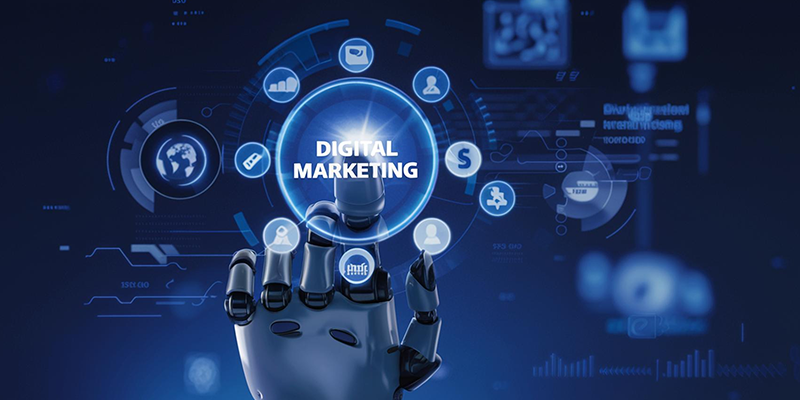 Best AI-Driven Digital Marketing in USA 2025
Best AI-Driven Digital Marketing in USA 2025 -
 Best Social Media Marketing Services in New York 2025
Best Social Media Marketing Services in New York 2025 -
 Best Digital Marketing Services in New York 2025
Best Digital Marketing Services in New York 2025 -
 Best Digital Marketing Services in Boston 2025
Best Digital Marketing Services in Boston 2025 -
 Best SEO Services in Boston 2025
Best SEO Services in Boston 2025 -
 Best Social Media Marketing Services in UAE
Best Social Media Marketing Services in UAE -
 Best Website Development Services in Dubai
Best Website Development Services in Dubai -
 Best Performance Marketing Services in Dubai
Best Performance Marketing Services in Dubai -
 Best SEO Services in Dubai
Best SEO Services in Dubai -
 Best Social Media Marketing Services in Dubai
Best Social Media Marketing Services in Dubai -
 Best Digital Marketing Services in Dubai
Best Digital Marketing Services in Dubai -
 Best Performance Marketing Services in Australia
Best Performance Marketing Services in Australia -
 Best Content Writing Services in Thailand
Best Content Writing Services in Thailand -
 Best Performance Marketing Services in Thailand
Best Performance Marketing Services in Thailand -
 Best SEO services in Thailand
Best SEO services in Thailand -
 Best Mobile App Development Services in Thailand
Best Mobile App Development Services in Thailand -
 Best Website Development Services in Thailand
Best Website Development Services in Thailand -
 Best Social Media Marketing Services in Thailand
Best Social Media Marketing Services in Thailand -
 Best Digital Marketing Services In Thailand
Best Digital Marketing Services In Thailand -
 Best Social Media Strategies in 2025 for Business Growth
Best Social Media Strategies in 2025 for Business Growth -
 Best Mobile App Development Services In Australia
Best Mobile App Development Services In Australia -
 Best Google Ads Services in Australia
Best Google Ads Services in Australia -
 Best SEO (Search Engine Optimization) services in Australia 2025
Best SEO (Search Engine Optimization) services in Australia 2025 -
 Best Email Marketing Services in Australia
Best Email Marketing Services in Australia -
 Best Graphic Design Services in Australia
Best Graphic Design Services in Australia -
 Top Content Writing Services in Australia
Top Content Writing Services in Australia -
 Top Social Media Marketing Services in Australia
Top Social Media Marketing Services in Australia -
 Best Digital Marketing Services in Australia
Best Digital Marketing Services in Australia -
 Best Website Development Services in Australia
Best Website Development Services in Australia
Book a Free Consultation
Ready to elevate your customer experience? Don’t settle for ordinary support. Our dedicated consultants are standing by to match your enterprise with the highest-caliber customer service executives in the USA. From virtual assistants to specialized account managers, we have the expertise and talent pool to meet your needs.
Contact our team today to discuss how our tailored customer executive services can transform your support operations. Let us help you hire or outsource the best customer service executives in USA, so you can focus on growing your business with confidence. Together, we will build a world-class customer support team that drives loyalty and success.
